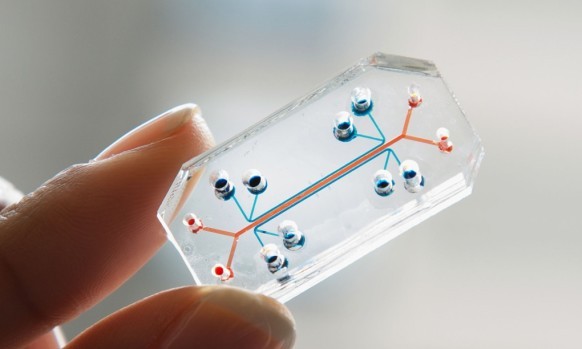Scientists have developed silicon chips that imitates the function of living human organs, with a possibility of ending the most controversial and long-decade debate animal testing.
This tiny and transparent microchip, smaller compared to thumb drive could soon change how scientists develop and test life-saving medicines. Called Organs-On-Chips, it is developed by researchers from Harvard’s Wyss Institute for Biologically Inspired Engineering and can simulates the microscale the functions of human organs like lungs, heart, and intestines. This will allow the scientists to test drugs and cosmetics in a much cheaper and quicker way without harming animals.
The microchip was implanted with hollow microfluidic tubes that are in place with human cells, where air, nutrients, blood and infection-causing bacteria could be pumped. Each chip measures the size of a computer memory stick that replaces the structures of an organ with microfluidic channels lined with living human cells, and then simulates those organs’ functions. The chips push quantities of chemicals past cells from hearts, lungs, intestines, livers, kidneys, Wired reported.
Because the chips are clear flexible polymer-made, scientists can see the processes within in real time, on microscale. Their goals is to create chips for different organs and connect them together in creating a whole-body network that disclose the effects of a drug, cosmetic, or chemical on the entire human body.
The chips are still on early stage to become an alternative to animal testing, but this technology offers a good promise in the future to analyze specific effects of drugs on humans with greater accuracy and speed, explained Don Ingber, founding director of the Wyss Institute. Startup company Emulate that works with Johnson & Johnson offers a pre-clinical trial testing on organs-on-chips, according to CS Monitor.
The chip won the Design of the Year 2015 contest from the London Design Museum, establishing the relationship between scientific research and the principles of design.



























